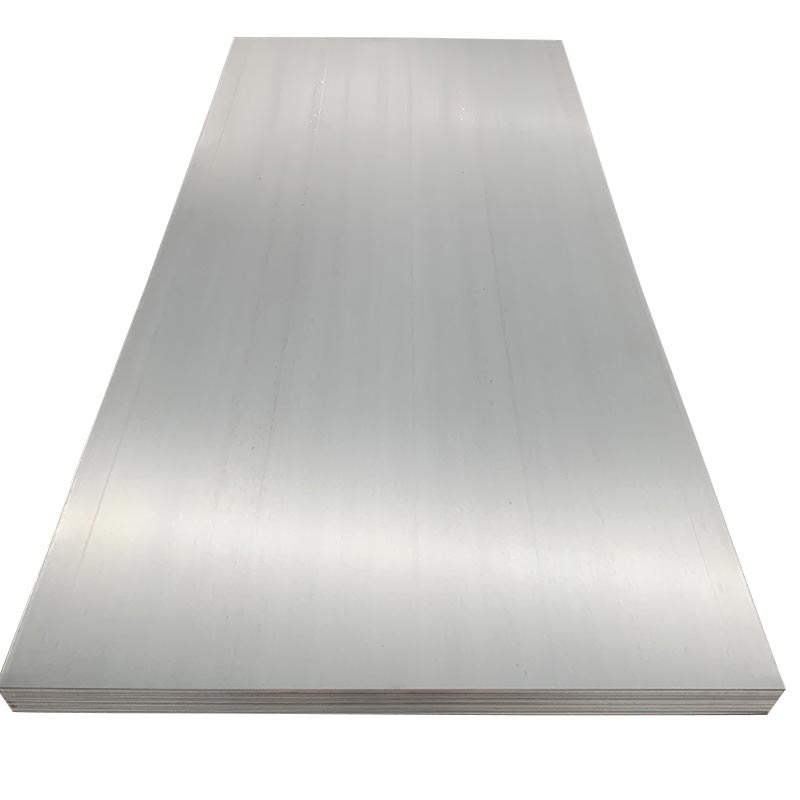Why Is Galvanized Steel Sheet the Top Choice for Corrosion Resistance?
2025-08-04
In industries ranging from construction to automotive manufacturing, the battle against corrosion is a constant challenge. Materials that succumb to rust and degradation not only compromise structural integrity but also drive up maintenance costs and shorten the lifespan of products. Among the various solutions available, galvanized steel sheet has emerged as a front - runner for its exceptional ability to resist corrosion. But what makes it stand out in this critical aspect? In this in - depth guide, we'll explore the science behind galvanized steel's corrosion resistance, its key features, detailed product specifications, and address the most common questions surrounding its use.
The Science of Galvanization: How It Stops Corrosion
At the heart of galvanized steel sheet's success in fighting corrosion is the process of galvanization itself. This technique involves coating a base steel sheet with a layer of zinc, creating a powerful barrier that shields the underlying metal from the elements. The magic lies in both the physical protection and a unique electrochemical reaction.
When zinc is applied to steel, it forms a tight - knit layer that acts as a physical shield, preventing moisture, oxygen, and corrosive substances from reaching the steel beneath. But even if this layer gets scratched or damaged, the zinc continues to protect the steel through a process called cathodic protection. Zinc is more electrochemically active than steel, meaning it will corrode first. In the event of a break in the coating, the zinc sacrifices itself, corroding instead of the steel, thus extending the life of the base material.
This dual - action protection makes galvanized steel sheet far more resilient than untreated steel or even painted steel, which relies solely on a physical barrier that can chip or wear away over time.
Key Features That Make Galvanized Steel Sheet a Corrosion - Fighting Champion
Long - Lasting Protection
One of the most notable features of galvanized steel sheet is its long service life, even in harsh environments. Unlike paint or other coatings that may need reapplication every few years, the zinc coating on galvanized steel is bonded to the base metal, ensuring durability for decades. In rural environments, galvanized steel sheets can last 50 years or more, while in coastal areas with high salt levels, they still offer 20 - 30 years of protection. This longevity translates to significant cost savings over time, as there's less need for replacement or maintenance.
Uniform Coating Coverage
The galvanization process, whether hot - dip or electro - galvanizing, ensures that the zinc coating covers the entire surface of the steel sheet, including edges, corners, and hard - to - reach areas. This uniform coverage is crucial because these vulnerable spots are often the first to corrode in other materials. For example, in a steel roof, the edges and fastener holes are prime areas for rust, but with galvanized steel, every inch is protected, preventing the spread of corrosion.
Resistance to Extreme Conditions
Galvanized steel sheet doesn't just hold up against moisture and oxygen; it also stands strong in extreme temperatures, UV radiation, and exposure to various chemicals. Whether it's used in industrial settings with high humidity and chemical fumes or in outdoor structures exposed to intense sunlight and freezing temperatures, galvanized steel maintains its integrity. This versatility makes it suitable for a wide range of applications, from agricultural buildings to chemical storage facilities.
Cost - Effectiveness Over Time
While galvanized steel sheet may have a higher initial cost compared to untreated steel, its long - term cost - effectiveness is undeniable. The minimal maintenance requirements, long service life, and reduced need for replacements mean that over the lifespan of a project, galvanized steel often ends up being cheaper. For instance, a galvanized steel fence will outlast a painted steel fence by decades, with no need for regular repainting, saving both time and money.
Product Specifications: Understanding the Details of Galvanized Steel Sheet
Coating Thickness and Weight
The thickness of the zinc coating is a critical factor in determining the corrosion resistance of galvanized steel sheet. It's typically measured in microns or grams per square meter (g/m²). The higher the coating weight, the longer the protection.
|
Coating Type
|
Coating Weight (g/m²)
|
Coating Thickness (microns)
|
Typical Service Life in Mild Environment
|
|
Light Coating
|
40 - 60
|
5.7 - 8.6
|
10 - 15 years
|
|
Standard Coating
|
80 - 120
|
11.4 - 17.1
|
20 - 30 years
|
|
Heavy Coating
|
140 - 200
|
20.0 - 28.6
|
30 - 50 years
|
Base Steel Properties
The base steel used in galvanized sheets also plays a role in their overall performance. Here are the key properties of the base steel:
|
Property
|
Description
|
Typical Values
|
|
Tensile Strength
|
The maximum stress the steel can withstand before breaking
|
300 - 550 MPa
|
|
Yield Strength
|
The stress at which the steel begins to deform permanently
|
200 - 450 MPa
|
|
Elongation
|
The percentage increase in length before fracture
|
10% - 30%
|
|
Thickness of Base Steel
|
The thickness of the steel sheet before galvanization
|
0.3 - 6.0 mm
|
Dimensions and Sizes
Galvanized steel sheets are available in a variety of dimensions to suit different applications:
- Width: 600 mm, 900 mm, 1200 mm, 1500 mm, 1800 mm
- Length: 1000 mm, 2000 mm, 2500 mm, 3000 mm, 6000 mm
- Sheet Type: Flat sheets, corrugated sheets, galvanized steel coils (for further processing)
Surface Finish
The surface finish of galvanized steel sheet can vary, affecting both appearance and performance:
- Spangle Finish: A spangle is the crystalline pattern visible on the surface. Options include small spangle, medium spangle, and large spangle. Small spangle offers a smoother, more uniform look, while large spangle has a more decorative appearance.
- Smooth Finish: Achieved through additional processing, this finish has a sleek, even surface, ideal for applications where aesthetics are important.
- Passivated Finish: A chemical treatment applied to the zinc surface to enhance corrosion resistance and prevent white rust during storage and transportation.
Applications: Where Galvanized Steel Sheet Shines
Construction Industry
In construction, galvanized steel sheet is widely used for roofing, wall cladding, structural frames, and fencing. Its corrosion resistance ensures that these structures remain strong and attractive for years, even in exposed outdoor conditions. For example, galvanized roofing sheets are a popular choice for warehouses and agricultural buildings because they can withstand rain, snow, and UV rays without rusting.
Automotive Sector
The automotive industry relies on galvanized steel sheet for car bodies, chassis components, and undercarriage parts. The zinc coating protects these parts from road salt, moisture, and debris, extending the life of the vehicle and reducing maintenance costs. Modern cars often use galvanized steel for critical components to meet strict durability standards.
Agricultural Applications
Farm buildings, grain silos, and equipment are frequently made with galvanized steel sheet. Farms are often exposed to high levels of moisture, animal waste, and fertilizers, which are corrosive. Galvanized steel resists these elements, ensuring that agricultural structures and equipment remain functional for long periods.
Industrial Equipment
Industrial facilities, such as factories and chemical plants, use galvanized steel sheet for ductwork, storage tanks, and machine housings. Its resistance to chemicals and extreme temperatures makes it a reliable choice in these harsh environments, where corrosion can lead to costly equipment failures.
Why Is Galvanized Steel Sheet the Top Choice for Corrosion Resistance? FAQ Common Questions
Q: How does galvanized steel sheet compare to stainless steel in terms of corrosion resistance?
A: While both galvanized steel and stainless steel offer corrosion resistance, they work in different ways. Galvanized steel uses a zinc coating to protect the underlying steel, with the zinc sacrificing itself to prevent rust. Stainless steel contains chromium, which forms a passive oxide layer on the surface that stops corrosion. In general, stainless steel offers better corrosion resistance in highly aggressive environments, such as those with high concentrations of acids or salts. However, galvanized steel is more cost - effective for many applications and provides excellent protection in most common environments, like rural, urban, and moderately coastal areas. For example, in a residential roofing project, galvanized steel is often a better choice due to its lower cost, while stainless steel might be preferred for a chemical processing plant near the ocean.
Q: Can galvanized steel sheet be painted or coated for additional protection or aesthetics?
A: Yes, galvanized steel sheet can be painted or coated, but proper preparation is essential. The zinc surface is smooth and non - porous, so it needs to be cleaned and treated to ensure good adhesion of the paint or coating. This usually involves degreasing, rinsing, and applying a primer specifically designed for galvanized metal. Painting can provide additional corrosion resistance, especially in extremely harsh environments, and allows for a wider range of color options to match aesthetic requirements. For instance, a galvanized steel fence can be painted to match the color of a house, enhancing curb appeal while adding an extra layer of protection against the elements. It's important to note that if the paint is damaged, the zinc coating will still protect the steel, but the exposed zinc may react with the paint, so regular maintenance of the paint layer is advisable.
Q: What factors affect the lifespan of galvanized steel sheet?
A: Several factors influence how long galvanized steel sheet will last. The thickness of the zinc coating is a primary factor – thicker coatings provide longer protection, as shown in the earlier table. Environmental conditions also play a significant role. Exposure to saltwater or salt spray, high humidity, industrial pollutants, and acidic or alkaline substances can accelerate the corrosion of the zinc coating. For example, galvanized steel in a coastal area will corrode faster than in a dry, rural area. Mechanical damage, such as scratches, dents, or abrasions that remove the zinc coating, can also reduce lifespan by exposing the underlying steel. Additionally, the quality of the galvanization process matters; a well - applied, uniform coating will last longer than a poorly applied one with gaps or thin spots. Proper installation and maintenance, such as avoiding contact with dissimilar metals that can cause galvanic corrosion, can also extend the lifespan of galvanized steel sheet.
Choosing the Right Galvanized Steel Sheet for Your Needs
Selecting the perfect galvanized steel sheet depends on your specific application, environmental conditions, and performance requirements. Consider the coating thickness based on the expected exposure to corrosive elements, the dimensions that fit your project, and the surface finish that meets both functional and aesthetic needs. By understanding the features, specifications, and answering the common questions, you can make an informed decision that ensures long - lasting, corrosion - resistant performance.
If you're looking for high - quality galvanized steel sheets that deliver exceptional corrosion resistance and reliability, Wuxi Jianbanghaoda Steel Co.,Ltd, is your trusted partner. We offer a comprehensive range of galvanized steel sheets, manufactured to the highest standards with precise attention to coating thickness, dimensions, and surface finish. Our products are designed to meet the diverse needs of various industries, from construction to automotive. To learn more about our galvanized steel sheet options and find the perfect solution for your project, contact us today. Our team of experts is ready to assist you with personalized advice and support.
Previous:No News



